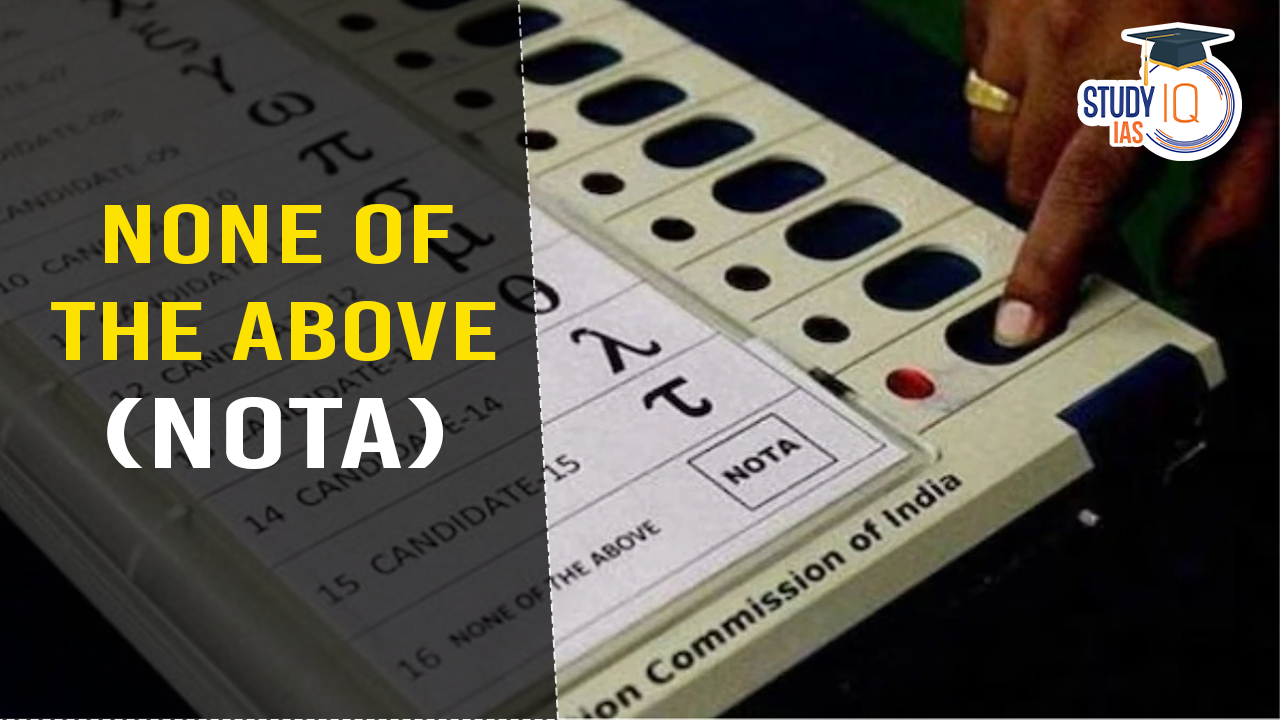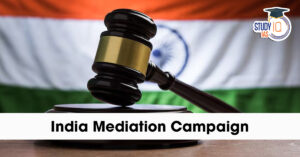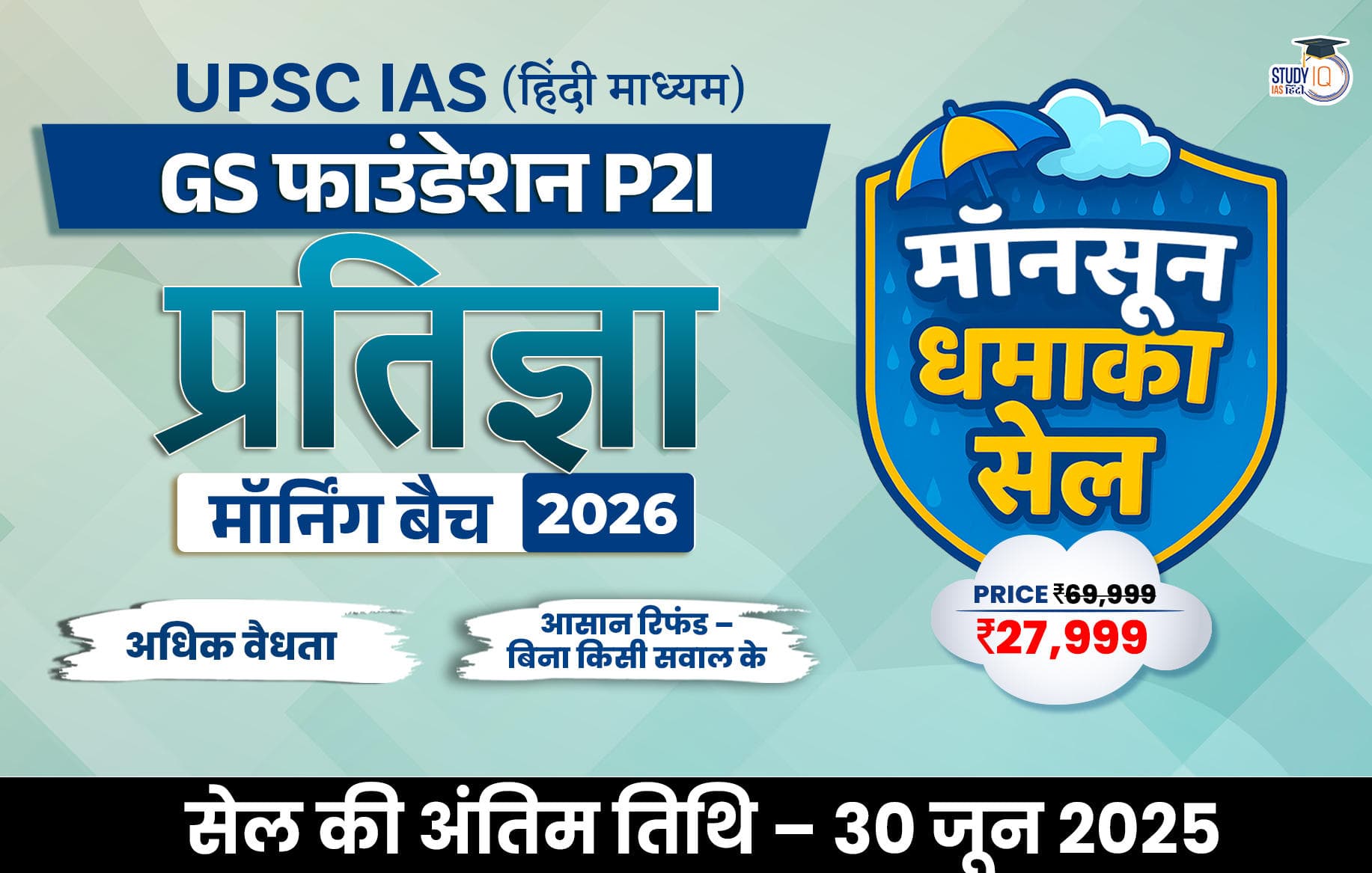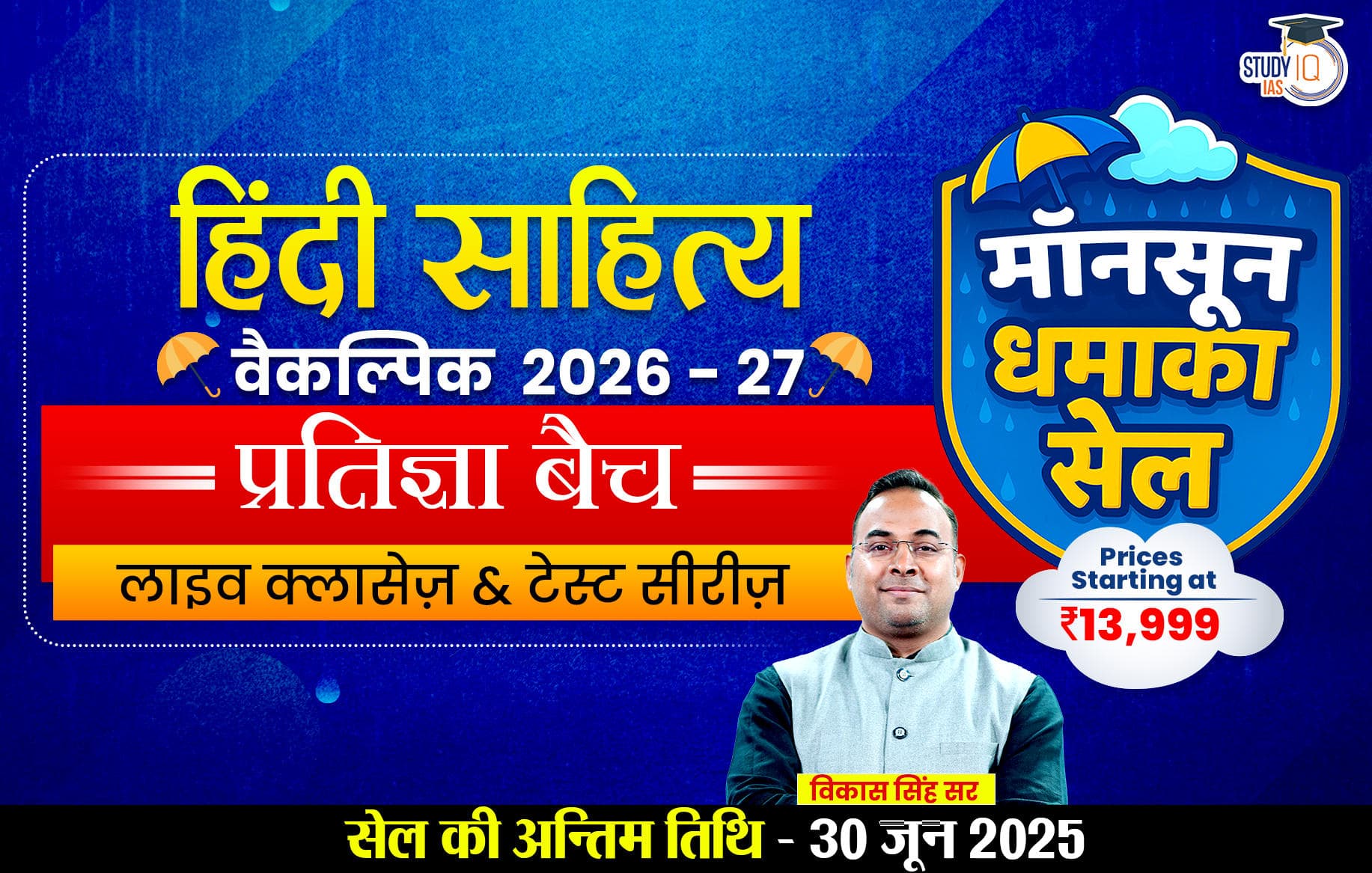Table of Contents
Context: Vidhi Centre for Legal Policy filed a Public Interest Litigation (PIL) seeking to make the NOTA (None of the Above) option compulsory in all elections, even if there is only one candidate.
None Of The Above (NOTA)
NOTA stands for “None Of The Above,” a ballot option for Indian voters. It allows voters to reject all candidates in an election without compromising their vote. It is an option on electronic voting machines (EVMs) that allows voters to reject all candidates contesting in an election.
Origin
- Introduced in India in 2013.
- Implemented following the Supreme Court judgment in the case of People’s Union for Civil Liberties (PUCL) vs. Union of India (2013).
- The Court ruled that the right to secrecy in voting is a fundamental right under Article 19(1)(a) (freedom of speech and expression), and hence NOTA should be included as an option to ensure free and fair elections.
| Aspect | Details |
| First Use | NOTA was first used in the 2013 Assembly elections in Chhattisgarh, Mizoram, Rajasthan, Delhi, and Madhya Pradesh, and then in the 2014 General Elections. |
| Legal Introduction | The option was introduced following a 2013 Supreme Court directive in the PUCL vs Union of India case. |
| Casting a NOTA Vote | Voters can select NOTA on the EVM, located at the end of the candidates’ list. |
| Previous Method | Before EVMs, voters had to verbally inform the presiding officer to cast a negative vote. |
| Electoral Impact |
|
Frictions Related to NOTA
- From 2018, states including Maharashtra, Haryana, Delhi, and Puducherry began recognising NOTA as a “fictional electoral candidate” in Local body polls.
- These states have rules that mandate re-election if NOTA comes out as the winner, effectively disqualifying the candidate who finished second.
- The petition contends that the practice of declaring the second-place candidate as the winner in cases where NOTA has the most votes is against the foundational principles of NOTA.
- The rules in these states regarding NOTA and election outcomes should be uniformly applied across all of India, as per the petition.
| Note |
| The concept of NOTA is not unique to India. Several other countries have similar provisions. For instance, Greece, Ukraine, and Spain have options equivalent to NOTA in their electoral systems. |
| Some Notable Examples of NOTA in 2024 Lok Sabha (general) Election |
|


 Monasteries in India: List of Major and ...
Monasteries in India: List of Major and ...
 National Doctor’s Day 2025: History, T...
National Doctor’s Day 2025: History, T...
 India Mediation Campaign, Objectives, Pr...
India Mediation Campaign, Objectives, Pr...





















